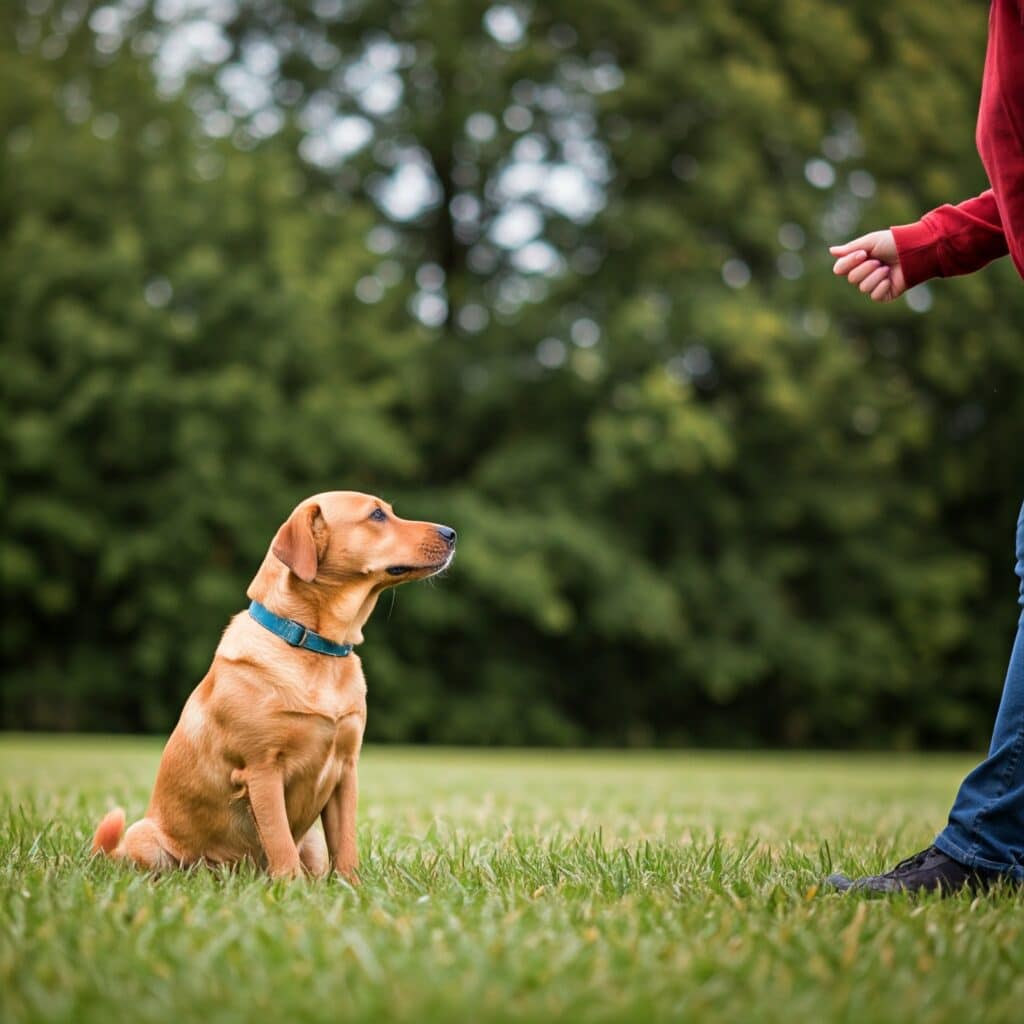Bringing a dog into your life is an exciting experience, but it comes with responsibilities, particularly when it comes to training. Whether you’re a first-time dog owner or just getting started with training your new canine companion, learning effective dog training techniques is essential for establishing a well-behaved and happy pet.
Training your dog can sometimes feel overwhelming, especially when faced with challenging behaviors or a stubborn pup. However, with patience, consistency, and the right approach, you can teach your dog essential skills, reinforce positive behaviors, and build a strong bond that lasts a lifetime.
Here are some of the best dog training tips for beginners to help you get started on the right paw.
1. Start with Basic Commands

One of the first things you’ll want to teach your dog are the basic commands. These are foundational skills that can help ensure your dog’s safety and well-being. Basic commands like “sit,” “stay,” “come,” “leave it,” and “down” are essential for controlling your dog in everyday situations.
Tip: Keep training sessions short and sweet—about 5 to 10 minutes each—especially for puppies or new dogs. Dogs have short attention spans, so keeping sessions brief will help them stay engaged without feeling overwhelmed.
Tip: Use a calm and positive tone of voice when giving commands. Dogs respond better to praise and positive reinforcement than to harsh or negative language.
2. Use Positive Reinforcement
Positive reinforcement is one of the most effective and humane dog training methods. It involves rewarding your dog for good behavior rather than punishing them for undesirable actions. The rewards can be treats, praise, or toys, and they should come immediately after your dog performs the desired behavior.
Tip: Keep a variety of treats on hand to use during training, especially high-value treats that your dog loves. Treats are an easy way to motivate your dog and provide positive feedback.
Tip: Be consistent with your rewards. Reward your dog every time they perform the behavior correctly at first, and gradually reduce the frequency as they become more proficient. This helps your dog understand which behaviors are expected.
3. Be Consistent
Consistency is key to successful dog training. Use the same words, commands, and gestures each time you train your dog. This helps them associate the behavior with the command more quickly. If you give your dog the same command but vary your tone, body language, or the word used, they may become confused and have trouble understanding what you’re asking.
Tip: Make sure everyone in your household uses the same commands and training methods to avoid confusing the dog. Dogs thrive on routine and predictability, so a consistent approach will help them learn faster.
4. Socialize Your Dog Early
Socialization is an essential part of your dog’s training, especially during puppyhood. Socializing your dog means exposing them to various environments, people, other dogs, and new experiences in a controlled and positive way. Well-socialized dogs are more likely to be confident, relaxed, and well-mannered in different situations.
Tip: Start socializing your dog as early as possible, ideally between 3 and 14 weeks of age, as this is a critical period in their development. However, older dogs can still benefit from socialization, so it’s never too late.
Tip: When introducing your dog to new experiences or other animals, make sure to do so gradually. If your dog is nervous or fearful, take things slow and offer praise and rewards for calm behavior.
5. Use the Right Training Tools
The right training tools can make a significant difference in your success. A collar or harness that fits well is essential for guiding your dog without causing harm. A leash helps you maintain control during walks and outings. However, it’s important to choose tools that are appropriate for your dog’s size, breed, and temperament.
Tip: If your dog is pulling on the leash, consider using a no-pull harness. These harnesses apply gentle pressure on the chest, discouraging pulling and making walks more enjoyable for both you and your dog.
Tip: Avoid using choke chains or prong collars, as they can cause physical harm or discomfort to your dog. Positive reinforcement tools such as clickers or treats are safer and more effective in the long run.
6. Create a Routine
Dogs thrive on routine. Having a regular schedule for feeding, potty breaks, playtime, and training sessions helps your dog understand expectations and reduces anxiety. A predictable routine also ensures that your dog gets the right amount of exercise, mental stimulation, and rest.
Tip: Set aside a specific time each day for training. Regular, consistent training helps reinforce the lessons and provides your dog with the structure they need to succeed.
Tip: Incorporate training into your daily activities. For example, you can practice “sit” and “stay” before mealtime or “leave it” when your dog is tempted by something they shouldn’t have.
7. Address Behavioral Issues Early

It’s essential to address behavioral problems early, before they become ingrained habits. Common issues like excessive barking, jumping on people, or chewing on furniture can often be corrected with consistent training and positive reinforcement.
Tip: If your dog is chewing on inappropriate items, redirect their attention to a toy or treat. Praise them when they chew on the right object and consistently remove anything they shouldn’t chew on.
Tip: For barking, avoid reinforcing the behavior by giving attention when your dog barks excessively. Instead, reward them for calm behavior and provide them with enough physical and mental stimulation to prevent boredom.
8. Be Patient and Understand Your Dog’s Personality
Every dog is different, and some may take longer to learn certain behaviors than others. It’s important to remain patient and flexible in your training approach. Some dogs are more independent, while others are eager to please. Understanding your dog’s personality can help you tailor your training to their specific needs.
Tip: Be patient with your dog, especially if they’re a puppy or a rescue with an uncertain history. Some dogs may take time to trust you or adapt to new routines.
Tip: If your dog seems frustrated or loses interest, take a break and try again later. Training should be a positive experience for both of you, and forcing your dog to keep training when they’re stressed can lead to setbacks.
9. Use Crate Training
Crate training is a valuable tool for teaching your dog to feel comfortable in a safe, confined space. A crate can be a place for your dog to rest, sleep, and feel secure, and it can also aid in potty training.
Tip: Make the crate a positive space by associating it with rewards, such as treats and toys. Never use the crate as a form of punishment.
Tip: Gradually increase the amount of time your dog spends in the crate. Start with short periods and build up to longer durations as your dog becomes more comfortable.
10. Seek Professional Help if Needed
If you find yourself struggling with training, don’t hesitate to seek help from a professional dog trainer. A certified trainer can provide expert guidance, help you address specific behavioral issues, and give you the confidence you need to succeed.
Tip: Look for a trainer who uses positive reinforcement methods and has experience working with dogs of your breed or temperament. You may also consider enrolling your dog in obedience classes for additional support and socialization.
Conclusion
Training your dog is a journey that requires time, patience, and consistency, but the rewards are well worth the effort. By following these tips, you’ll be able to build a strong, trusting relationship with your dog while teaching them the essential skills they need to be well-behaved, confident, and happy.
Remember that every dog is unique, so be patient with the process and celebrate small victories along the way. With the right training techniques and plenty of positive reinforcement, you and your dog can enjoy a lifetime of love, companionship, and mutual respect.







I learned so much from this article—it was full of useful information! The site is
a fantastic resource.